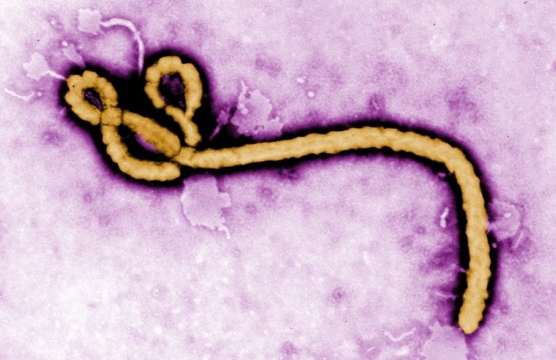Digital Technologies
Throughout Latin America, a digital divide has emerged.
On March 24, 2022, the Inter-American Dialogue hosted a public event to discuss perceptions of health investments in the wake of the Covid-19 pandemic and links between health outcomes, economic performance, and the well-being of citizens.
Panelists for the event included Yajaira Bastardo, professor of Pharmacoeconomics and Pharmacy Administration at the Central University of Venezuela, Javier Guzman, director of the Global Health Policy Program and senior policy fellow at the Center for Global Development and Antonio Vergara, president and head of diagnostics of Roche Latin America. Michael Shifter, president of the Inter-American Dialogue, gave introductory remarks, while Arachu Castro, chair of Public Health in Latin America at Tulane University, moderated the exchange.
Shifter started the conversation with initial observations that underlined the importance for LAC nations to reach at least 6 percent of GDP in health investments, of which at least 30 percent should be devoted to primary care. Shifter also highlighted the difficult situation LAC currently faces with a very limited fiscal space after the pandemic, which in turn might undermine larger health investments. With competing demands from other sectors in which spending is also needed, it is still unclear whether the health sector will be able to attract necessary additional funding.
[caption id="attachment_122356" align="alignright" width="300"] L-R: Arachu Castro, Yajaira Bastardo, Antonio Vergara, Javier Guzman, Michael Shifter[/caption]
L-R: Arachu Castro, Yajaira Bastardo, Antonio Vergara, Javier Guzman, Michael Shifter[/caption]
Castro echoed this sentiment by underlining how only Cuba and Uruguay met the 6 percent of GDP investment ratio in the health sector in Latin America, followed closely by Costa Rica, Argentina and Chile. She also noted that Covid-19 exposed structural limitations of the region linked to underfunding, which could serve as a justification to lobby for additional spending in health in post-pandemic years.
Bastardo stressed the disproportionate impact Covid has had on the Americas, where 30 percent of the world’s confirmed cases and 40 percent of the deaths have occurred, according to the WHO. In the context of a fragmented and diverse region such as Latin America, where the consequences of Covid-19 were highly unequal, Bastardo identified three ways to increase the efficiency of health responses to emergencies. First is the health technology assessment (HTA), which consists of a systematic evaluation of properties, effects, and impacts of health care technology. The second tool is the common value frameworks in health equipment pricing. Bastardo underlined how in the health sector, market failures lead to the need to establish common frameworks for prices, quoting the example of vaccines. Lastly, the third instrument is real-world evidence (RWE) data, a collection method of patients’ clinical information from a number of different sources that provides precise, low-cost data about the health situation of a country.
“The challenge of the pandemic is continuing today, since there are still limitations that the economic crisis has exacerbated: lack of technical capacity, health systems fragmentation and the lack of data or incentives.”
Vergara underlined how health investments during and after the pandemic have increased mainly in high-income countries but not in middle or low-income ones. Vergara noted several positive lessons from the pandemic. First, the importance and effectiveness of diagnostics, whose relevance was shown during the pandemic with Covid testing. In Latin America only one percent of the already low level of health investments are devoted to diagnostics. Secondly, the need to invest in health infrastructure, both for ordinary and emergency cases. And lastly, the significance of research and development (R&D) and innovation, to which Roche is devoting 20 percent of its revenues. Vergara concluded by saying that beyond developing new technologies, it is essential to work towards making these technologies available to the whole population, as happened with testing methods during the pandemic. In order to do so, it’s necessary to set up collaborations between the private and public sector at all levels.
“It’s not only important to invest more in health, but it’s also essential to invest better.”
Guzman offered a critical view on whether the perception on health investments has improved after the pandemic. Quoting a study from the University of Antioquia based on data from the International Monetary Fund (IMF), he emphasized that even if general government spending has slightly increased, countries such as Mexico and Ecuador still opted for austerity and increased their spending by only 1 percent of GDP during the pandemic, across all sectors. On the other hand, countries such as Chile and Peru increased their general spending more significantly, by 14 percent and 8 percent of GDP respectively, but only 1 percent of that was dedicated to health in Chile and only 18 percent in Peru. Overall, Guzman thought the pandemic did not significantly improve the perception of health investments in LAC, which is still seen as an expenditure rather than an investment to improve a country’s economy and well-being.
Guzman also stressed the fact that many countries are expected to see their spending shrink in the coming years due to fiscal consolidation needs that followed peak pandemic spending in 2020. Government spending in Latin America and the Caribbean is likely to reach pre-pandemic levels only around 2026, meaning that the resources available for health investments will be limited. To conclude his remarks, Guzman added that even if the “part of the pie” for health is limited, significant efforts should also be directed to investing better, rather than only more, as Vergara had previously mentioned as well.
“Let’s not forget that we are talking about health, and what its determinants are. Health is the result of a cross-cutting dimension, and we need to consider also how other sectors of the government can contribute to a healthy society.”
The panel then turned to comments from the audience. The first question concerned how big the gap is between health infrastructure currently available in the region and the level of infrastructure investments needed. Vergara responded that the discrepancy is still very wide, citing again the example that only one percent of health investments is devoted to diagnostics. A starting point would be to cover the basics of health investments outlined by the PAHO, but also to find creative solutions based on information technology and new data-gathering methods.
Another question dealt with how, in this context of limited health spending, could we protect the most vulnerable populations. Guzman suggested that other than covering the gaps of health investments, governments should also focus on underlying conditions that affect the most vulnerable sectors of the populations, such as mental health, through prevention, tracing and innovation.
Other questions focused on how Latin America’s health systems are tied to international cooperation, especially links to the United States, European Union and China, and how decisions and actions on health in those countries relate to how heath systems function in Latin America and the Caribbean.
Another participant suggested that this June’s Summit of the Americas in Los Angeles could provide a good venue to communicate the importance of more and better health investments to political leaders from around the region.
Throughout Latin America, a digital divide has emerged.
How well are countries in the Americas prepared to fight the spread of a disease like Ebola?
How big of a problem is hepatitis C in Latin America? What kinds of efforts should countries and the private sector make to fight it?
 Main photo: Maxpixel via CC Zero
Main photo: Maxpixel via CC Zero

